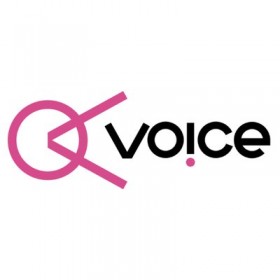The corporate and creative worlds have always been at odds. One is synonymous with analytical thinking, the other, the family disappointment, cute and loveable but unlikely to come to much. While creativity has been welcomed in the marketing sphere, it’s had no other place in the corporate arena. It’s not been seen as serious enough to play any other role, perpetually undervalued and overlooked. But with lateral thinking now carrying more weight and increased value being placed upon the ability to find alternative solutions and pathways within business, is now the time for creativity to be embraced by the corporate world?
What can creativity bring to businesses?
Creativity encompasses various aspects beyond marketing campaigns. While it's common to narrowly associate creativity solely with marketing endeavours, its potential extends far beyond. Creativity can effectively align a company's values and purpose, leading to positive impacts across all facets of the business. While many businesses perceive creativity as merely a 'nice to have,' few recognize its potential as a business imperative. However, what if creativity were viewed as essential?
How can businesses maximise the potential of creativity?
Creativity can bring new insights and approaches to all areas within a business. Too often, we do things just because that’s how it’s done, but when you look at processes through a creative lens, it becomes possible to find new, faster, and more efficient ways to achieve the same goal. Consider the anecdote about the toothpaste company that augmented sales by 40% through a seemingly simple innovation — expanding the hole in the tube. In that case, this is a perfect example of creativity not being done for the sake of it, or to make something look better but to achieve operational or financial goals in a way that might never have been considered before.
HR functions
So many companies do the same thing when it comes to HR and onboarding. You come in, sit with someone who bores you senseless with a 74-slide-long presentation about the company's history, and sit at your new desk waiting to shadow the next person. Why not do something completely different? Rethink the way you deliver all of the necessary information. Gamify it, take them out to see, feel, and experience exactly what you do, if possible. There’s usually a more creative way of doing something tedious, and that’s where a Creative Director comes in. If it ends up reducing churn, improving employee satisfaction or benefitting the overall culture of the business, you might just end up with a stronger team and lower recruitment costs as a result.
Team building
There’s something inexpressibly naff about team-building exercises. It usually feels like forced fun, where employees are doing the same things they probably did at their last two companies. But taking a more holistic approach and looking beyond the typical activities, exploring other, more unique ways for teams to interact and get to know each other on a deeper level, can enhance collaboration and support in the long run, when people get back into the day-to-day. The aim is to help new starters and old hands to think, ‘Wow that was a great way to begin my role/get to know my colleagues/build trust’ but this is rarely the result.
Customer experiences
Providing good customer service has become the baseline expectation. However, in a sea of 'good,' brands risk blending into the background. With a touch of creativity, good service can transcend to greatness. By approaching even the smallest customer interactions with creativity, such as reimagining automated email sequences to reflect the brand's tone or incorporating personalised calls, businesses can differentiate themselves and elevate the customer experience. If more companies embraced creativity in their customer interactions and remembered that they are communicating with real-life individuals (for now…), the overall quality of customer experiences would be far better.
Differentiation
Brand differentiation is more critical than ever, but many companies lack creativity in differentiating themselves from others. Offering unique and memorable experiences that make customers stop and appreciate the brand is an easy way to change that, but it requires creative thinking. You can take Monzo as a great example here. Instead of the grey, corporate demeanour, they present customers with vibrancy and colour and make everything easy. Applying for an account is simple and requires you to record a short video saying ‘My name is David and I want to open a Monzo account’ with your government-issued ID and you’re verified within 48 hours. Minimal admin for maximum service and accessibility. They’ve listened to what customers want and used creative flair.
Why has it taken so long for creativity to be brought into the corporate fold?
We have always subconsciously devalued creativity as a society. Art college has always been viewed as ‘Mickey Mouse’ – an easy option or a way of putting off getting a “real job”. While views are changing, parents are becoming more supportive of their children exploring the career choices that are more likely to make them happy – not just wealthy – and schools are slowly beginning to adopt a more inclusive attitude, there remains the perception that creativity isn’t financially rewarding and that creative careers hold a lower status.
As a society, we have historically undervalued creativity, often viewing pursuits like art college as ‘Mickey Mouse’; frivolous or impractical—a mere diversion from pursuing more traditional, financially lucrative career paths. While there's a gradual shift in attitudes, with parents increasingly supportive of their children's pursuit of happiness over mere financial success, the perception persists that creative endeavours lack financial viability and hold a lower status compared to other professions. Now could be the time that those perceptions change.
Creativity has huge potential within the corporate sphere. The two worlds of corporate and creative have always been disparate, but maybe not for much longer.
 | David O'Hearns has worked within the creative industry for over 25 years. Starting as a graphic designer following his graduation from Newcastle University, Dave went on to start up his first creative agency in 2006. Following multiple successes with the likes of Bentley Motors, Adidas and Swiis Foster Care, he founded his second agency, Dawn Creative, in 2014. Since then, David and his team have created TV adverts, advertising campaigns, full brand identities, and more, for some of the world’s most prestigious brands. |
 | Dawn Creative specialises in brand, digital and motion. Working closely with businesses and marketing teams, Dawn Creative develops and manages brand identities to make sure they stay true to themselves and attract the right audience. |









0 Comments